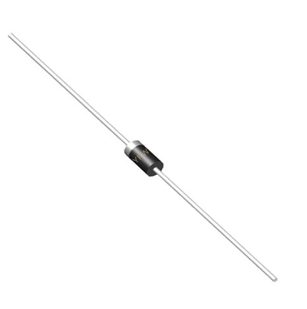Analysis of Fast Recovery Diodes
Date:2025-06-17 Categories:Product knowledge Hits:378 From:Guangdong Youfeng Microelectronics Co., Ltd
1. Introduction
Fast recovery diodes (FRDs) play a crucial role in modern power electronics systems. These diodes are designed to quickly transition from the conducting state to the blocking state, reducing reverse recovery losses and enabling high - frequency operation. Their applications span across various fields, including switch - mode power supplies (SMPS), motor drives, and renewable energy systems. Understanding how to analyze fast recovery diodes is essential for engineers and researchers to optimize circuit performance and ensure reliable operation.
2. Structure and Working Principle
2.1 Structure
Fast recovery diodes are typically fabricated using semiconductor materials such as silicon (Si) or silicon carbide (SiC). In a silicon - based fast recovery diode, the structure mainly consists of a p - type semiconductor region, an n - type semiconductor region, and a lightly doped n - drift region. The p - n junction is the core part that determines the diode's electrical behavior. The addition of the n - drift region is a key feature, which helps to increase the breakdown voltage while maintaining a relatively fast reverse recovery speed.
In SiC - based
Fast recovery diodes, the wide - bandgap property of SiC material endows them with superior electrical characteristics compared to Si - based diodes. The structure of SiC fast recovery diodes also includes p - and n - type regions, but due to the material's high critical electric field strength, they can achieve higher breakdown voltages and faster switching speeds in a more compact structure.
2.2 Working Principle
When a forward voltage is applied across the
Fast recovery diodes, holes from the p - region and electrons from the n - region are injected into the opposite regions, creating a large number of minority carriers in the depletion region. This allows the diode to conduct current with a relatively low forward voltage drop.
When the voltage across the diode is reversed, the minority carriers that have been injected into the depletion region need to be removed before the diode can block the reverse voltage. In a
Fast recovery diodes, the design of the semiconductor structure and the doping profile enables a relatively rapid removal of these minority carriers. This process is called the reverse recovery process, and the time required for the diode to fully recover and block the reverse voltage is known as the reverse recovery time (\(t_{rr}\)). A shorter \(t_{rr}\) indicates a faster - switching diode, which is highly desirable in high - frequency applications.

Previous:
Classification, Structure, and Principle of MOSFET
Next:
Key Parameters for Analysis
